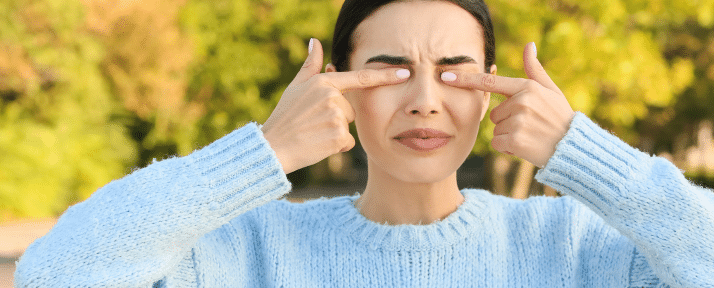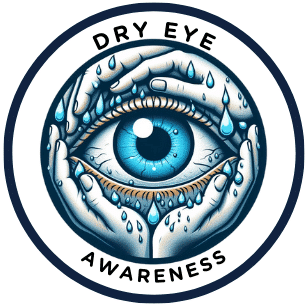
Today, I’m going to be talking about dry eye syndrome—a condition that might be more common than you think. If you’re often finding your eyes to be irritated, itchy, or red, and you’re reaching for eye drops more often than not, you might just be dealing with this pesky issue. Dry eye syndrome happens when your eyes don’t produce enough tears, or when the tears aren’t of the right quality to keep your eyes adequately moist.
Dry eye symptoms can range from a simple scratchy sensation to more severe discomfort, and can include blurred vision at times. There are several factors that might put you at risk, including age, certain medical conditions, and even some medications. It’s not just about discomfort, either—chronic dry eye may lead to more serious eye problems if left untreated.
While dry eye syndrome can be a standalone issue, it’s important to understand that it might also be a signal from your body that something else is off balance. That’s going to include how it links with allergies, which is what you’re going to find out about in the next section. Spoiler alert: yes, your sneezing fits and that pile of tissues might be related to why your eyes are so irritable.
Allergies: A Trigger for Dry Eye?
If you’re reading this, chances are you’ve felt that aggravating itch or discomfort in your eyes during allergy season. It’s not a coincidence that your dry eye symptoms seem to flare up when allergens are in the air. You’re going to find out about the fascinating, though annoying, interplay between allergies and dry eye syndrome.

The science behind this correlation goes like this: Your body’s immune response to allergens can lead to inflammation. When your eyes encounter an allergen, they might react by releasing histamine and other chemicals that cause itching, redness, and swelling. This isn’t just about the redness or itchiness, it’s also about the disturbance to your tear film, a key factor in dry eye syndrome.
In my opinion, and corroborated by research, the link is clear. For instance, pollen, dust, and pet dander are notorious for triggering allergic reactions, and they also contribute to ocular surface inflammation, disrupting the natural lubrication of your eyes. Adding to the discomfort is the tendency for people to rub their eyes when they itch, which only exacerbates the dryness and irritation.
Don’t worry too much about this becoming a constant thorn in your eye (pun intended). In the next section, we’ll explore how to diagnose and tackle both allergies and dry eye syndrome, so you can mitigate the annoyance and keep your eyes comfortable year-round.
Diagnosis and Treating the Dual Dilemma
Getting the right diagnosis for both allergies and dry eye syndrome is crucial because they can have such a symbiotic relationship. A visit to an eye specialist, such as an optometrist or ophthalmologist, is where you’re going to start. Employing tests that might include tear production assessments and examination of the eye’s surface, specialists can determine if you’re dealing with dry eye, allergies, or both. Remember that correct diagnosis is essential for effective treatment.
Treatment strategies for people with a dual diagnosis of allergies and dry eye syndrome can be a bit complex. These strategies can include over-the-counter eye drops for immediate relief, prescription medications and possibly even allergy shots prescribed by an allergist. Your eye doctor may recommend lifestyle changes as well, such as avoiding allergen exposure or using air purifiers.
It doesn’t stop with medications and avoiding triggers. Enhancing your home or work environments can also play a big role. This could be as simple as regularly cleaning to reduce dust or using a humidifier when the air is dry. Cold compresses and proper eyelid care can alleviate some symptoms, offering some comfort. Taking care of your eyes now can make a big difference down the line.
In terms of diet and overall health, Omega-3 fatty acids and staying hydrated are suggested to improve eye health. Your body’s natural tear production can benefit from these simple yet effective changes. Additionally, certain eyewear can protect your eyes from wind and allergens.
Always communicate with your healthcare provider before starting any new treatment to ensure it’s safe and right for you. You can always adjust your approach down the road, as your needs or the seasons change.
Prevention and Management: Integrated Care for Eyes
I’m going to outline some strategies to help you preemptively tackle the symptoms of both dry eye syndrome and allergies. If you want to take control of your eye health, a proactive approach is key.
Taking measures to minimize allergen exposure is the first line of defense. This can include keeping windows closed during high pollen seasons, using air purifiers, and wearing sunglasses outdoors.

Regular visits to your eye care provider is vital. They can offer the right advice and treatment options that can greatly improve day-to-day comfort.
Embrace a holistic lifestyle that supports eye health—stay hydrated, maintain a balanced diet rich in omega-3 fatty acids, and take screen breaks to rest your eyes.
I really hope that you explore these preventative measures. Your eyes are precious, and with the right care, you can look forward to clearer, more comfortable vision, despite allergies or dry eye syndrome. Remember, you can always adjust your approach down the road, but starting strong can make all the difference.
